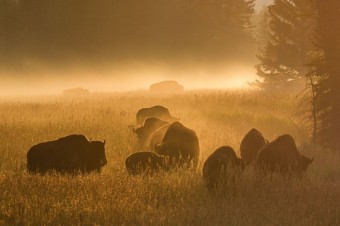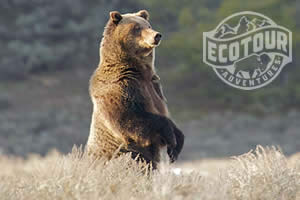Species Profile: Bison
Common and boundless pasture were the words used by Lewis to describe the habitat of bison, who were equally as abundant at the time. Once estimated in numbers of 30-60 million, in herds which “darkened the whole plains” (Lewis and Clark), bison were approaching extinction by the late 1800’s. Today this charismatic megafauna has rebounded and is a frequent sight in both Grand Teton and Yellowstone National Parks.
Read more ...



